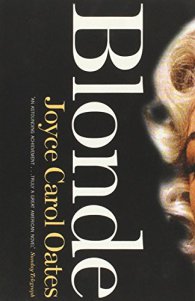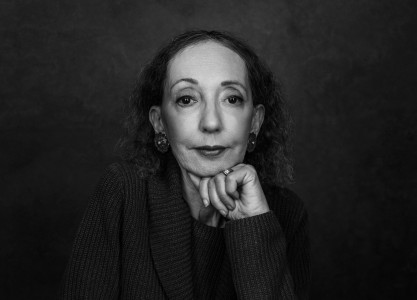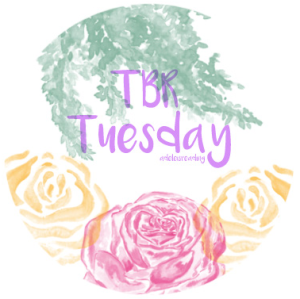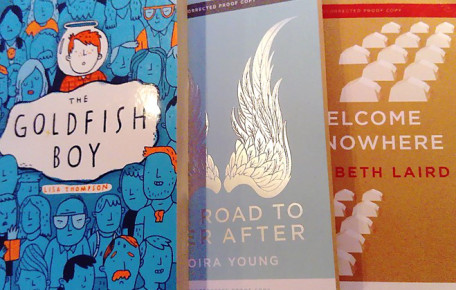

★★★★★
You may think I’m getting soft, seeing the second five-star rating in four days, but trust me on this. I’ve been reading this book since November and, at almost a thousand pages, it is a dazzling modern classic: a sprawling, daring, combative act of imagination. First published in 2000, it gains an even more fervent urgency when read in the light of last year’s snowballing Hollywood scandals. Hovering between fiction and non-fiction, it tells the story of the most iconic woman of the 20th century – so recognisable that you only need a wisp of platinum-blonde hair and the feathered end of a dark eyebrow to put a name to the face on the cover. Yet this is not a biography but a creative reconstruction of the life and times of the girl who started life as Norma Jeane Baker and ended up crushed beneath the glittering celebrity of her alter ego, Marilyn Monroe.
I’m not a fan of Marilyn Monroe. I’ve only seen three of her films (Some Like It Hot; The Seven-Year Itch; the execrable Prince and the Showgirl) and she didn’t particularly grab me in any of them. Like a fool, I fell for the screen persona and wrote her off as a vapid, breathy-voiced blonde, all wiggle and no wit. I wouldn’t say that I’m any more of a fan after reading Oates’s novel, but I do feel an empathy for Norma Jeane: the shy, tragic and surprisingly smart woman within that plucked and gilded carapace.
Hollywood has its claws in Norma Jeane Baker from the minute she’s born. Her mother, the fragile and delusional Gladys Mortensen, is a bit-player hoping for a big break in the Studio; her unknown father, according to Gladys, is one of the great stars of the silver screen. Growing up under her mother’s increasingly erratic care, the young Norma Jeane is taught to see the world through the language of the movies, where fiction is more real than reality itself. Her concept of her own life takes on aspects of the movies: her own desire to embody the Fair Princess, the leading female role; her constant search for the Dark Prince, her fated soulmate, whose identity oscillates uneasily between lover and father. That division is one that Norma Jeane, as a fatherless little girl, far too pretty too young, struggles to maintain. Her adult persona is an overgrown child-woman, with a breathy baby voice and a fluttery vulnerability, tailored to appeal to older men, even as these same older men exploit, abuse and denigrate her.
What is it to be a woman? Norma Jeane knows this: a woman is a domestic creature, kind and attentive to all her husband’s needs, a 1950s vision of wholesomeness in apron and sunddress. A woman is a mother, only rendered complete by giving birth to children – the one thing that Norma Jeane desires so desperately. And yet, alongside this, Norma Jeane has an equally powerful urge: to act. And what is it to be an actor? It’s to soar to the greatest heights, to inhabit a character so completely that it can be hard to tell where the self ends and the part begins. It’s to prove one’s ability, to take the minor role and make it a showstopper. It’s to study, hone the body, read, absorb and craft. It’s to understand what it means to be human, both within and without. And this, too, Norma Jeane desires. Those who know her only as Marilyn Monroe are shocked by her voracious appetite for knowledge. How can this dumb, blonde broad read Darwin? Pascal? Freud? She knows she could be great, finding hidden depths in the characters of Chekhov and Ibsen – but her foray into stage works is brief. She might be the most dazzling woman on the silver screen, but she belongs to the Studio, and they know what the public want. They don’t want profound explorations of the human condition. They want voluptuous exuberance, a gorgeous woman spilling out of her dress. Sex.
Oates’s story has a much grander scope than the everyday minutiae of Norma Jeane’s life. That’s not to say that she hasn’t done her research. For example, most of the photographs she describes from Norma Jeane’s modelling days actually exist. But Oates uses her experiences as a jumping-off point to explore the mood in America in those postwar decades, when the enemy was shifting from the Nazis to the Communists; when writers, actors and artists were pulled up in front of McCarthy’s committee; and when Hollywood was dominated by omnipotent, domineering studios who owned their stars body and soul. Norma Jeane, like so many other young actresses (and actors) would find that it was always just about possible to get a foot on the ladder – at a price. And, no matter how many millions her film raked in, the Studio would keep her tightly on a leash, the goose that laid the golden eggs, caged and battery-farmed. The book is by turns dreamlike, shocking, painful, uplifting, depressing, eloquent and shockingly crude. It feels much greater than the sum of its parts: a portrait of an era, not a person.
The totemic quality of the novel is reinforced by Oates’s decision to avoid some of the most famous names. Directors and actors are usually known by initials; Norma Jeane’s husbands, except her first (whose name is changed), are identified by profession, not name: ‘the Ex-Athlete’; ‘the Playwright’. Names are fluid, as Norma Jeane herself moves between several different identities, each associated with a role, and each tapping into a powerful aspect of her self. The veracity of these identities gives her acting its power – its ‘genius’, as it’s often called (I must watch some of her other films to judge for myself) – but, because they’re real, they also become a liability. Norma Jeane can’t do what Sir John Gielgud, famously, did (“Just act, dear boy”). For her, acting is method – a dissolution of the self in order to reveal the other. And, when you’ve fragmented the self often enough, sometimes there comes a point where you simply can’t put it back together again. That’s where the drugs come in – the lovers – the increasingly unreliable behaviour.
I can’t resist a comparison to the play Farinelli and the King, where there’s a similar tension between the ‘real’ person and the stage persona, the latter an almost vampiric creation that threatens to drain the life away from its host. Like Carlo Broschi, Norma Jeane hates the thing she has become but, like him, she has no way to escape from it. As the book progresses, the division between herself and Marilyn becomes ever more stark, even more stressed. ‘Marilyn’ is a mask, which has come to life and grown onto its wearer’s face. It makes her ever more desirable, but will suffocate her in the end.
After finishing the book, I spent some time looking at photographs of Norma Jeane, both before and after her incarnation as Monroe, and I was struck by how different she could look. I’ve only ever seen the most famous photos of her and, in some of those early pictures, she looks like an entirely different woman. Oates makes the point, wisely, that pictures can’t be trusted: Norma Jeane was an expert in projecting glamour, joy and happiness even when she was falling apart inside. But there is more magic in these early photographs, showing a radiant girl with honey-brown hair, than in any number of studio publicity shots – and you can see quite clearly how her iconography is gradually honed down to that one, relentless, unforgiving point: the hair; the lips; the smile. No wonder Warhol was able to reduce her so effectively in his series of Pop Art prints. But I challenge anyone, after reading the book, to look at those glossy photos from the height of her career, and not feel just a little bit sick and angry on her behalf. Why do so many women out there try to look like her? Why do we consistently bring her up as a cheap, quick, lascivious sex symbol, without bothering to think about the real woman beneath?
Blonde can’t be read quickly. You have to take your time: it’s like setting out on a voyage (rather like it felt to read Kristin Lavransdatter). Oates takes on many different voices within the novel: straight prose, fragments of interviews, snippets of poetry, quotes from books both real and invented. It demands attention, but rewards it amply. Even if you’re not given to reading books about mid-20th-century America (it’s not exactly my favoured period either), this is sure to make an impact, hanging over and haunting you for days after you finish it.
Buy the book
These are some of the photographs of Norma Jeane Baker that struck me after I’d finished the book. They either show her before she was famous, or in a less familiar contemplative mood.
 Norma Jeane Baker in 1946, photographed by Richard C Miller
Norma Jeane Baker in 1946, photographed by Richard C Miller  Norma Jeane Dougherty’s wedding portrait, aged 16, photographed by Richard C Miller (1942)
Norma Jeane Dougherty’s wedding portrait, aged 16, photographed by Richard C Miller (1942)  Norma Jeane Baker in Malibu, photographed by André de Dienes (1946)
Norma Jeane Baker in Malibu, photographed by André de Dienes (1946)  Norma Jeane Baker photographed at her job in an armaments factory by David Conover (1945)
Norma Jeane Baker photographed at her job in an armaments factory by David Conover (1945)  Norma Jeane Baker at 15 (1941)
Share this:
Norma Jeane Baker at 15 (1941)
Share this:




